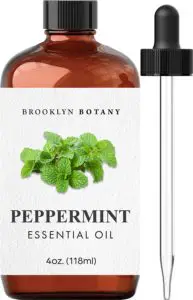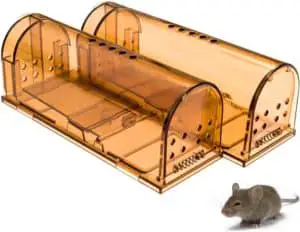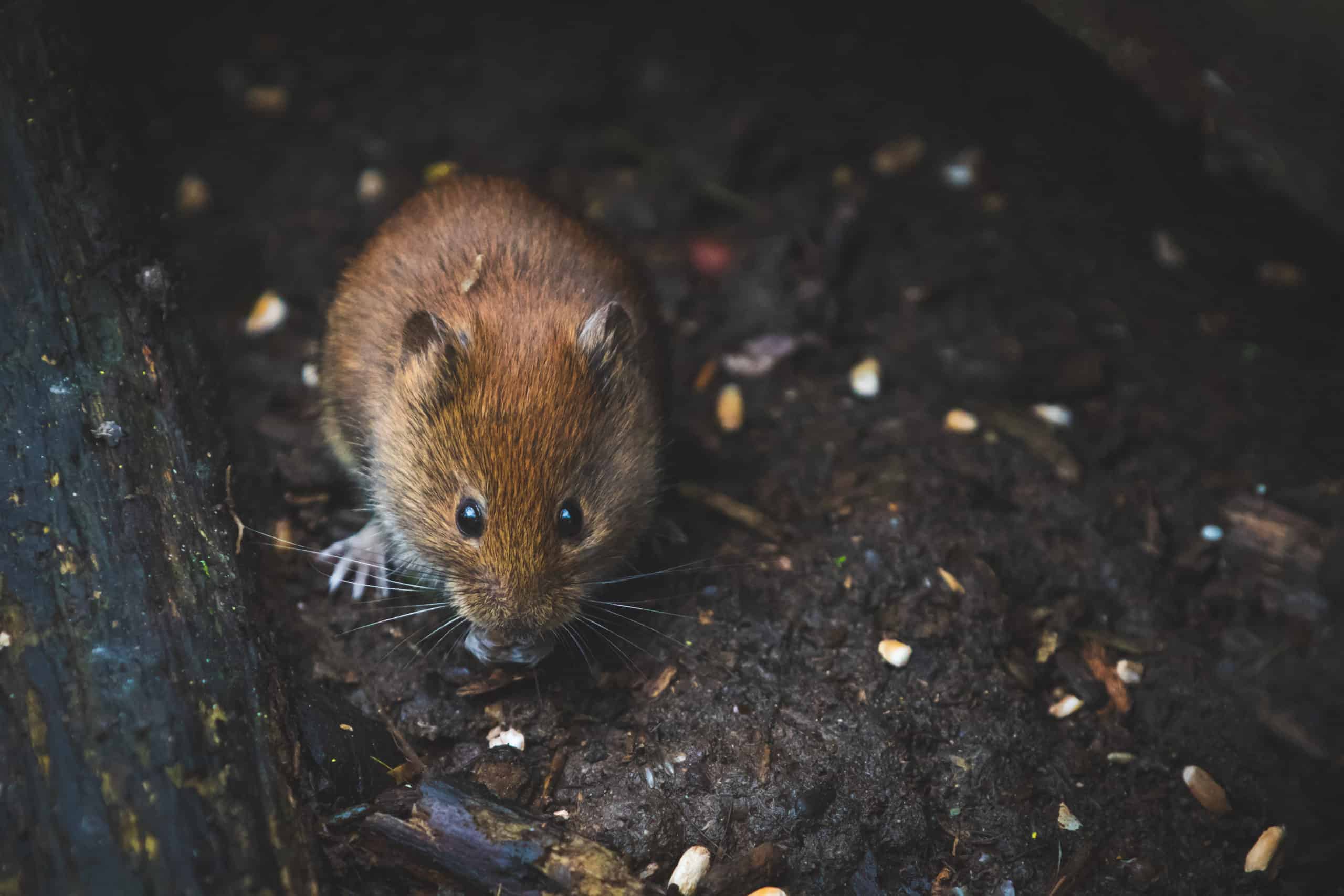Unwanted stowaways, like mice and other rodents, can wreak some major havoc in RVs. They indiscriminately chew through walls, ceilings, insulation, electrical wiring, and stored food. Mice can also carry disease, leave unsanitary droppings on shelves, in cabinets and drawers, and build nests; The quicker you can remove them from your camper, the better.
Luckily, there are a number of ways to remove these unwelcome visitors, from: Peppermint oil, mouse traps, steel wool, and consistent RV maintenance.
How Mice Get Into RVs
Mice are hungry, curious, and small. Put these traits together, and you have an underestimated RV enemy.
Any small hole in an RV can serve as an entrance for mice, especially the underbelly, the compartment where the shore power cord is kept, and even the air conditioner!
A 1/4″ hole is enough room for these rodents to squeeze their body through and scurry around your RV…
And if you’re housing food, a water source, and a warm place to build a nest, mice will work very hard to break in and set up shop.
Mice will try to break in to get to:
- Cereal Boxes
- Water
- Beverage Cartons
- Bags of Flour
- Pet Food
- Candy
- Cheese
- Syrups, Sweeteners, Condiments…
- Anything Eatable!
- Hospitable Environments for Nesting
First, make sure to store everything eatable in sealed containers. Then, take the next steps to prevent mice from using your RV as a rodent hotel…
How to Prevent Mice From Getting Inside
Steel Wool
In order to prevent mice from entering your camper in the first place, scour your RV’s underbelly- looking for any small holes that need to be filled, fixed, or covered.
Stuff a bit of steel wool in any entrance point you see (make sure to use regular steel wool, not steel wool soap pads!).

Steel wool can act as a great first barrier: Although it’s possible for mice to chew through the material, it is tougher than most. Sometimes, a little mouse deterrent can go a long way.
Peppermint Oil
Peppermint oil is a surprisingly effective treatment for deterring mice from coming into your camper.
Mice have an exceptional sense of smell, and peppermint oil- with it’s strong scent- irritates their sensitive olfactory system.
As a rodent repellent, peppermint oil is highly efficacious, but can be toxic to dogs and cats when ingested or absorbed by the skin.
Make sure to place peppermint oil only in areas that your pets cannot access.
What you’ll need:
- Cotton Balls
- Peppermint Oil (100% Pure)
Simply soak the cotton balls 1/2 way in the peppermint oil, and place each ball near any potential opening or nesting spot: Storage areas, cabinets, shelves, undercarriage, and under dinette seats.
We prefer to use Organic essential oils- and it is strong! Rodents’ noses don’t stand a chance!

Make sure to check and replace the cotton balls frequently with freshly-soaked cotton: When the oil starts to dissipate, the scent will lessen, and mice will take the opportunity to sneak in.
Don’t give them that chance: Replace the peppermint balls daily or every other day, until the mice stop trying to get into your camper.
Eventually, they’ll get the hint and move on to more hospitable environments.
Mouse Traps
Another method of mouse removal is mouse traps. There are traditional “kill traps” made of glue, spring traps, or poison, but I prefer “no kill” options.
Traditional traps can be cruel and leave a mess, while poison is just that: Toxic chemicals meant to be fatal. Such poisons do not discriminate- they’re fatal not only to rodents, but to pets and humans as well…
Living in such a small space like an RV, poison may not be the best option.
Click the video below to check out how a humane mouse trap works…
Of the “no kill” mouse traps on the market, the Humane Trap is an excellent option.
These traps are well-designed, simple to use, and effective.
What you’ll need:
- Authenzo Humane Mouse Traps
- Mouse Bait (peanut butter and cheese are two great options)
The bait is simply stuffed into the specified compartment toward the back of the trap, and the inner platform is pushed down; When a mouse enters the tube and heads toward the bait, the platform changes position, closing the opening.
The mouse will remain alive and well, but can no longer roam around your RV!

If you have many mice in your RV, make sure you lay multiple Humane Traps to catch them all.
Common placement for these traps in your RV might include: Storage areas, under the dinette and drivers’ seats, couches cabinets, drawers and shelves. These kinds of traps are small and efficacious, making them a great method for getting rid of rodents!
When mice are caught in these traps, make sure you drive them far enough from your RV so they won’t make their way back…
Rats are excellent at finding their way back “home”, and the standard rule of thumb is take them at least 100 yards (or 300 feet) away, leaving them in a field, or other open space.
Wrap Up
Mice are often unexpected invaders, their presence taking many RVers by surprise.
If you find yourself with unwanted, furry roommates, remember there are a number of ways to prevent them from taking over your camper, from: Steel wool, peppermint oil, and humane traps.
So if you have mice in your RV, there’s no need to worry. Just take the proper steps to “mouse-proof” your camper, and you’ll be “furry friend” free!

